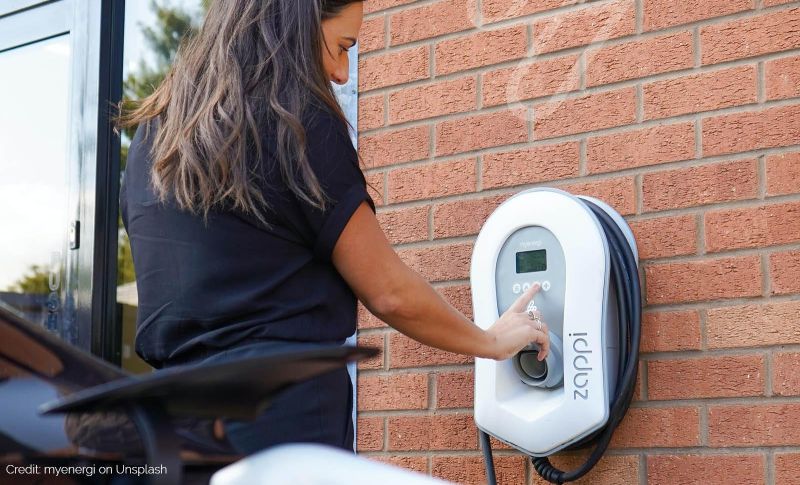
SBTi Progress Report 2021
The SBTi's third progress report, 'Scaling Urgent Corporate Climate Action Worldwide', finds the initiative in a period of exponential growth, with SBTi companies representing over a third of global market capitalization.
Explore the report
The SBTi is responding to systemic challenges to target adoption
Through the analysis of the growth and impact of SBTi companies in 2021, a number of gaps have been identified, notably in terms of geographical and sectoral reach, but also regarding transparent disclosure and reporting practices. The SBTi strategy 2021-2025 is tailored to respond to these challenges, and aims to close the current ambition and emissions gap by massively scaling up 1.5°C-aligned corporate climate action in the next three years, especially in the areas where it has been lacking to date, i.e., the heaviest-emitting sectors and emerging markets; and through the development of a measurement, reporting and verification (MRV) framework.

Bridging the global gaps: the SBTi Country Activation and Incubator Projects
The SBTi has grown exponentially in recent years, especially in Europe, the United States and Japan. However, there are still significant regional gaps, with fewer companies from developing regions, especially Africa, Latin America and Southeast Asia.
Overall, companies based in non-OECD countries account for fewer than 15% of SBTi companies, while those countries represent 67% of global emissions. Asia alone is responsible for 53% of global emissions, yet Asia-based companies represent 20% of all SBTi approved targets and commitments.
The biggest gaps are currently in Africa and Latin America. Although these regions currently represent only 7% of global emissions and host fewer global companies, they include economies with among the highest growth rates. As such, it is crucial for these countries and companies to anchor their development in line with the Paris Agreement.
To help bridge these global gaps, the SBTi launched the Country Activation Project in 2020 and continues to support the work of the initiative's Incubators. These projects have already delivered promising results in 2021, and are planning to scale up in the coming years.
The Country Activation Project intends to activate SBTi partners at the country level from Africa, Latin America and Southeast Asia. Since its launch, the project has successfully built the technical capacity of SBTi local partners through the first SBTi “Train the Trainers” - a learning program that gathered almost 200 participants from 25 countries. It also designed and delivered activities specifically for companies in those key regions, with more than 3000 participants joining; and translated SBTi resources into key languages, such as Portuguese and Spanish.
The SBTi has also supported the work of the initiative's Incubators in India and Mexico, projects in which SBTi partner organizations work collectively to disseminate the initiative and support companies in their countries, pursuing opportunities to connect the SBTi to the national context of the climate agenda, and break down barriers to adoption of science-based targets.
Overall, these programs supported an 86% growth in the number of SBTi companies in these regions in 2021, with a total of 36 new Latin American companies and 42 new African and Asian companies. The SBTi will continue implementing and strengthening the Country Activation and Incubators Projects in 2022.
Expanding SBTi sectoral reach and supply chain engagement: Scope 3 and sectoral guidelines
Although adoption of science-based targets, especially among high-impact companies, has progressed in many industries, some are still lagging behind. These include retail, transportation services, materials, power generation and infrastructure. To help deliver more engagement and emission reduction at scale, particularly in heavy-emitting industries, the SBTi is building detailed 1.5°C pathway sector guidelines, including for the cement, steel, buildings and chemicals industries, all to be finalized between 2022 and 2023. Guidelines for forest, land and agriculture (FLAG) are also in development and will include methods on deforestation and other land-related impacts. The SBTi has already published detailed 1.5°C guidelines for apparel & footwear, aviation, financial institutions, information and communications technology and power.
Scope 3 emissions reduction is a key challenge for companies, often due to a lack of visibility and monitoring of suppliers’ data. Companies also face engagement gaps between their suppliers and procurement teams. The majority (55%) of companies setting science-based targets are based in Europe. Because these companies are often high-emitting global corporations whose operations and supply chains span across many regions, engaging these companies can have a significant impact on emissions. To address this challenge, the SBTi is undertaking a review of a scope 3 target setting methods and criteria, and developing a Supplier Engagement Toolkit to help companies develop and track supplier engagement targets.

Bringing financial institutions on board
Financial institutions play a crucial role in accelerating the global adoption of science-based targets, through directing capital away from high carbon activities and decarbonizing financial portfolios. According to CDP, financial portfolio emissions are over 700 times larger than their direct emissions on average. However, only 25% of financial institutions disclosing through CDP are currently reporting portfolio emissions. Fewer than half of CDP-disclosing financial institutions, and 27% of insurers, report actions to align portfolios with the Paris Agreement.
Financial institutions are key to unlocking the system-wide change needed to decarbonize the global economy and reach net-zero by 2050. In 2021, the SBTi published the world’s first guidelines for financial institutions and private equity companies to set science-based targets covering their investment and lending portfolios. In 2021, three financial institutions had targets approved - La Banque Postale, KB Financial Group and EQT - via the pilot phase of the SBTi's guidance for this sector. Since 2015, a further 117 financial institutions have also committed to set science-based targets.
The SBTi is now developing a Net-Zero Standard for Financial Institutions, to be released in 2023. The SBTi is also working to bring these standards in line with other initiatives, such as UN Environment Programme net-zero initiatives, TCFD reporting and the Glasgow Financial Alliance for Net Zero.

Bridging the credibility and reporting gap: corporate climate accountability
2021 was also a year of renewed scrutiny and skepticism over corporate climate action. Greenwashing by some corporate actors, including a proliferation of net-zero pledges that are not always backed by robust science-based decarbonization plans, has undermined public trust and the credibility of private sector claims. Based on the UN Global Compact-Accenture CEO Study, 57% of CEOs believe they are making sufficient efforts to limit the global rise in temperature to 1.5°C. Yet, only 2% of these CEOs have validated their science-based targets in line with a 1.5°C trajectory. Following the words of the UN Secretary General Antonio Guterres, “there is a deficit of credibility and a surplus of confusion over emissions reductions and net-zero targets, with different meanings and different metrics.”
The SBTi Net-Zero Standard - described in this video by the SBTi's Senior Manager for Net-Zero, Emma Watson - was launched ahead of COP26 in Glasgow to answer this credibility challenge, bring back trust and anchor net-zero corporate action in climate science. It provides a clear, science-based definition and pathway to net-zero, in line with a 1.5°C trajectory. The Standard requires companies to set both near- and long-term targets, to ensure immediate action, rather than postponing decarbonization. The credibility and robustness of targets is ensured through a thorough, independent target validation process by SBTi experts.
The Science Based Targets initiative's new Net-Zero Standard is a welcome tool for companies to ensure consistency
Monitoring, reporting and verification
Setting net-zero science-based targets aligned with 1.5°C is only one element of a company's climate action journey. Businesses then need concrete plans to achieve them and importantly, must report on progress in a transparent way. The credibility gap is also rooted in these transparency and accountability challenges.
Currently, emissions disclosure is a voluntary option, and the majority of the companies do not disclose sufficient climate data. Also, methods of emissions disclosure differ significantly among companies, from reporting through established systems like CDP, to corporate websites, sustainability reports or press releases. The lack of robust methodology for calculating emissions is also a challenge, with many companies relying heavily on estimates, especially for scope 3 emissions. These inconsistent ways of disclosing progress, and limited scrutiny of emissions reporting, negatively impact transparency and corporate accountability.
The SBTi is working to expand the scope of its climate alignment and certification framework from ambition (target-setting) to performance (target-delivery) through the development of a measurement, reporting and verification (MRV) framework. This will provide a clear and standardized mechanism to assess, verify and enhance corporate accountability on progress towards science-based targets. The SBTi aims to release technical aspects of the framework ahead of COP27, releasing the full framework ahead of COP28. It will present companies with clear expectations and set guidance on how to report, assess and verify progress against the achievement of targets. This will enhance reporting data quality, and the accountability of SBTi companies, reinforcing trust and confidence among stakeholders.
Private sector has the power to trigger government action
To fully decarbonize the global economy and build a truly resilient and sustainable future, regions, businesses and governments must work together to harness the ambition loop — a positive feedback loop in which private sector and government climate action are mutually supportive. When companies listed in an index move toward more ambitious action, they create a shift that can influence the real economy beyond indexes, and send strong market signals to policymakers.
In an ambition loop, decisive business leadership supports bold policy action, which in turn accelerates further climate action. This can unlock faster progress on national objectives and bigger market opportunities. For businesses, the push comes from long-term, clear and consistent government policies, which provide the clarity and confidence corporates need to achieve their targets faster and invest further in climate action.
For governments, the push comes from leading businesses that help demonstrate commercial demand and economic possibilities. Corporate climate action and advocacy lend political and economic support to government efforts, so they can deliver on existing policy goals sooner, and advance new, bolder targets and policies.
It is critical that many more companies engage consistently in policy advocacy in support of ambitious climate policy, which is fundamental to reaching net-zero by 2050 and enabling companies to deliver on their science-based targets.
Companies must also act to ensure that they are not funding trade associations or business groups that have a track record of weakening and delaying climate policy in key countries. Failure to do this critically undermines the ambition loop and will ultimately make it harder for individual companies to deliver on their science-based targets.
